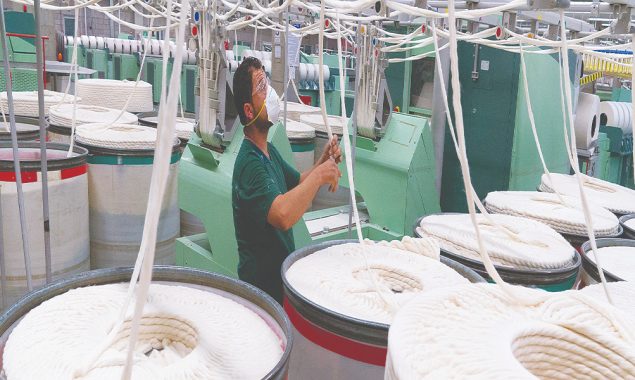
KARACHI: Earnings of the KSE-100 Index increased significantly, displaying a jump in quarterly profit of 19.9 per cent. However, almost all listed companies involved in manufacturing, assembling and production activities have complained of the supply chain challenges, which would take a toll on the demand and profitability.
According to industry sources, the freight for spot container to the US had reached $15,000 and $10,000 for Europe.
The recent pandemic has created a global supply chain crisis, which has contributed to the increasing international commodity prices. The supply headaches that were viewed as temporary when the coronavirus pandemic began are expected to last through 2022.
Muhammad Tahir at Pearl Securities said that the 18 per cent decline witnessed in the auto sales in January 2022 was expected.
“As expected, the decline in the auto sales is primarily on account of the expectation of price increase due to tax withdrawal in the Finance Bill for FY22 and continued disruption in the supply chain,” he added.
Indus Motor Company notes in its half-yearly report that despite robust demand of automobiles during the period, the auto sector production capability continued to be affected by the supply chain disruptions, especially the supply gap of certain raw materials, including the shortage of semiconductor chips by certain manufacturers.
“The challenges such as rising global commodity prices, increased freight charges on imports and material shortages may have a negative impact on the sales volume and profitability of the auto sector for the coming periods.”
DG Khan Cement mention high demand and supply chain issues were pulling the commodity prices upward. “Particularly, coal has peaked beyond $250/tonne, an all-time high during the period before coming down to around $165/tonne by the end of December. However, high demand and supply constraints are making its price vulnerable and subsequently pushing it upward.”
Nishat Mills Limited (NML) in its financial report noted that the textile industry experiencing an increase in cotton and polyester fibre prices, shutdown in gas supply, increase in regasified liquefied natural gas (RLNG) rates, disruption in the global supply chain and adverse impact of rupee depreciation against the dollar on imported raw materials.
Dawood Hercules Corporation noted the economy continues to recover from the challenges of the Covid-19 pandemic. “However, higher commodity prices due to global supply chain challenges and fiscal/monetary stimuli are fuelling inflationary pressures for the domestic economy that may suppress the local demand.”
Today’s twisted supply chain is forcing the companies to place precautionary orders and avoid running out of goods, which only compounds the pressure. The consumers are confronting higher prices and shortages.
An analyst said for goods to move seamlessly from overseas factories to local addresses, the oceangoing vessels, shipping containers, cargo terminals and truckers all must work together, like runners in a relay race. If the equipment gets stuck at any point, delays ripple along the entire chain.
Pakistan’s over trade volumes hover around 3 million TEUs (twenty-foot equivalent unit) and 400 per cent jump in freight rates will impact the country’s entire economic system in a very adverse manner.
Inflation will remain on the higher side due to supply disruptions, primarily export targets may be missed and the large-scale manufacturing could decline.
The World Bank has already revised down the GDP growth projection at 3.4 per cent for FY22. However, the Pakistan government has contested these projections.
According to the Ministry of Finance, the government has vowed to ensure that the growth momentum remains intact with the macroeconomic stability and GDP growth for FY22 will remain close to 5 per cent.
The government is targeting exports of $28 billion in the next fiscal year, as it plans to extend the duty-free import regime to more raw materials in the upcoming budget to support the manufacturers.
Of this $28 billion, $20.8 billion is expected to come from the textile exports. With the unavailability of sufficient containers and rising freight costs, these targets are getting even harder to achieve.
Pakistan’s export industry largely depends on imports, as around 70 per cent of the export-oriented industry inputs are imported. Higher freight is increasing the cost of production and even after there is severe shortage of empty containers and vessels.
Ali Akhtar at Cargo and Cargo Limited said that there was a global shortage of vessels and containers, while shipping lines were also capitalising on this unprecedented demand for shipping.
“The freight has increased even further to $9,000/container for the US. Similarly, the rates for Europe have surged to $8,000/container from $1,500/container a year ago.”
“This shortage is not likely to ease anytime soon. Besides, there is a capacity shortage; as a year or two ago, four or five vessels used to come to Pakistan but now only two to three are coming.”
Read More News On
Catch all the Business News, Breaking News Event and Latest News Updates on The BOL News
Download The BOL News App to get the Daily News Update & Follow us on Google News.



